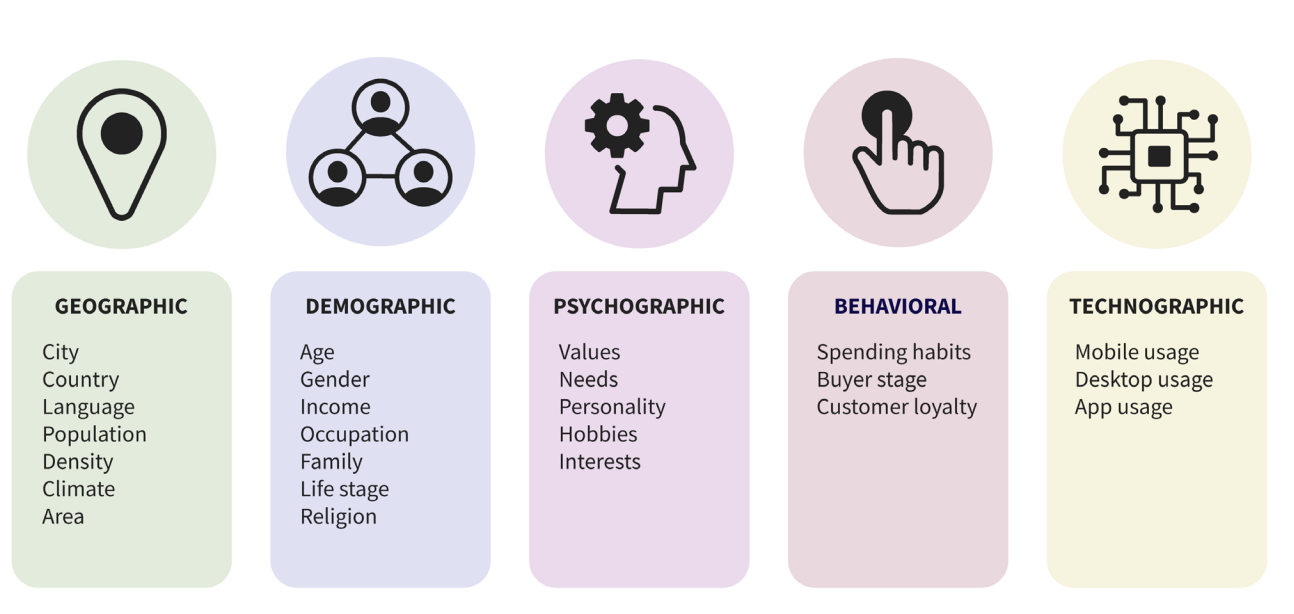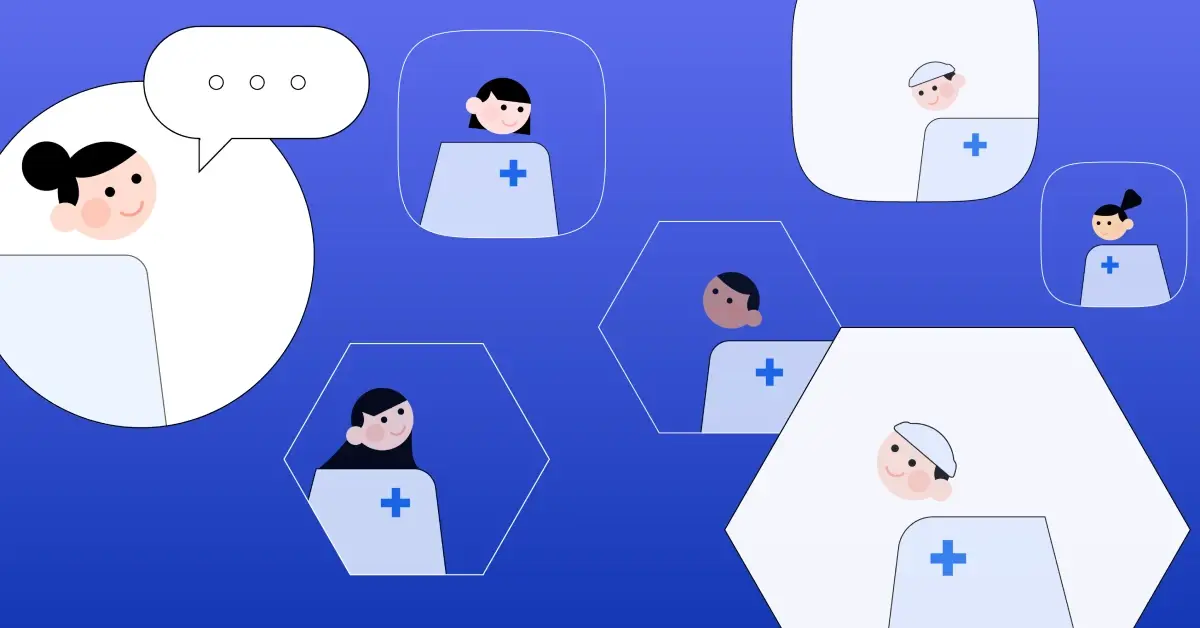How to target healthcare professionals?
Healthcare professionals (HCPs) are a unique audience when it comes to marketing. They have busy schedules and make critical decisions that impact the health and wellbeing of their patients on a daily basis. Not only do they regularly attend trainings and educational events in their field, but they also proactively seek out new information and research to improve their practice. Marketers who can deliver clear, concise messaging that quickly communicates the value proposition of their product or service will be much more likely to cut through the noise and get noticed. In this blog post, we focus on targeting and segmentation of the audience in order to reach the audience faster and more effectively and answer a question on how to target healthcare professionals.
Why do you need to use target marketing in healthcare?
Without it, you may only use a method that does not reach every type of audience. For example, Internet marketing will surely reach younger HCPs, and a large majority of patients who may be looking for a new drug or way of treatment. But it won’t get to about half of Baby Boomers, who don’t own a laptop or smartphone, or a large majority of seniors. To note, the average health care provider age is 49 years old.
Due to the nature of their profession, doctors and other HCPs are one of the most highly informed audiences. HCPs receive numerous messages for pharmaceutical companies about various products and the latest medications. As a result, they must prioritize and determine which messages and content are worthy of their time. If there is one advice you want to hear when questioning how to target healthcare professionals, it is this: aim to help rather than sell. But there is no one-size-fits-all approach either. Knowing who could best benefit from your products and services and how to reliably connect with them is essential. Thus, understanding and identifying the perfect healthcare audience for your marketing campaigns will help you improve deployments, save time and money, produce more relevant and impactful content, and enhance your overall return on investment (ROI).
First step to target healthcare professionals is identifying your target audience
1. Healthcare specializations
Understand your market and the optimal targets for your products and services. Be as specific as you can. Simply identifying “doctors” isn’t narrow enough, for instance. If you’re marketing a medication that addresses heart arrhythmia, for example, focus on cardiologists who treat this.
Which healthcare specialties are most important to you? What patients do they typically provide care for? Are they high prescribers of medications? Your content should focus on drawing these HCPs based on their behaviors and specialities.
2. Prescribing Habits
A healthcare provider’s prescribing habits could be an indicator of whether they’d be a good fit or not. Recognize not only the HCP’s needs, but their patients’ needs too. Is the doctor or a pharmacist a high-volume prescriber within the therapeutic category you are most interested in? Are they prescribing competitive brands in large numbers? How can your products address their patients’ needs?
3. Demographic Information
Who are the healthcare professionals you're aiming to reach? Consider their age, gender, job, the kind and size of their practice, and their education level. Also, think about the demographics of the patients they provide care for. Having this information will help you create a campaign that connects with them and offers real value.
4. Location
Where can you find your ideal targets? Think about the country, state, city, metropolitan area, or even specific zip codes. Depending on your market and distribution plans, this location information can be crucial in finding the right healthcare professionals for your needs.

Breaking down your target audience into smaller groups for better marketing results
Whether you’re compiling your own HCP contact lists or purchasing them from a third-party provider, ensuring your messaging reaches the right people is important. The right lists will have plenty of details to help determine they are a good fit for your campaigns.
Even within your larger lists, you’ll want to further filter and segment your target audiences for each of your products and services to produce relevant and informative content and messaging, while encouraging brand engagement and loyalty.
Proper segmentation necessitates that you learn as much as possible about your audience—including their pain points, preferences, and how they search for and interact with your products. This makes it easier to develop effective marketing campaigns with relevant content that leaves positive impressions.
Filter your audience based on considerations such as physician specialties, prescribing behavior, or other methods mentioned above. This will help you deliver more accurate messaging to the right audience at the right time. Healthcare professionals value content that is specific, relevant, and overall, informative. More focused, highly targeted campaigns yield greater engagement and better results.
Don’t forget, this is not a one-time deal, either. No matter what kind of healthcare professional you’re focusing on, you’ll need to regularly examine your campaign’s progress and adjust your marketing approach accordingly to ensure the success of your entire strategy.
Connect targeting and segmentation of healthcare professionals with the right channels
It's time to think about where and how healthcare professionals get information and who they trust. Some say that marketing channels are just as important as the content itself, while others argue that finding the right channel is more crucial than crafting the message. If your great message is displayed on a web page but your target audience never sees it, it won't work. On the other hand, if your brand is seen on a channel your users use regularly, it can help your brand a lot. So, let's begin by looking at the different channels available that will help you target healthcare professionals.
Examples of traditional marketing channels:
- Print advertising: Ads in newspapers, magazines, brochures, or direct mail campaigns.
- Broadcast advertising: Ads on television or radio stations.
- Outdoor advertising: Billboards or posters to promote products and brands.
Examples of paid channels:
- Pay-per-click (PPC) advertising: Running ads on search engines like Google or Bing, where you pay each time a user clicks on your ad.
- Display advertising: Placing banner or image ads on websites or mobile apps.
- Social media advertising: Promoting your brand or content on platforms like Facebook, Instagram, Twitter or LinkedIn through targeted ads.
- Influencer marketing: Collaborating with social media influencers to promote products or services.
- Email marketing: Sending targeted promotional emails or newsletters to your subscriber list.
- Mobile marketing: Reaching customers through mobile devices via SMS marketing, mobile apps, or mobile advertising.
- Search engine marketing (SEM): Utilizing paid and organic strategies to improve visibility and drive traffic from search engine results pages.
Overall, try to shift to independent sources and digital platforms. Journal articles, mobile apps, and medical association websites proved to be the most visited platforms based on a 2023 survey.
Three golden rules of communicating to healthcare professionals
Once you target healthcare professionals and identify the appropriate channel, the next step is to craft your message. When it comes to communicating through various channels, clarity should always be a guiding principle for all your messages. This is where the field of copywriting comes into play. We won't get into the nitty-gritty details of copywriting, but it's essential to know that creating content means using specific rules and doing things the right way.
Healthcare professionals are often busy, so your message should be easy to understand. However, you still need to provide enough information to build trust.
Here are three easy rules for talking to healthcare professionals:
- Make sure your message is clear.
- Tell them exactly what you want them to do.
- You don't always need to use pictures or visuals.
By following these rules, you can target healthcare professionals effectively. Your messages will be short, clear, and trustworthy.
Sources:
- Mediately. Digital Doctor Report.
- WebFX. Target Marketing in Healthcare: How to Reach Your Audience Online
- Dignity Health.
- Healthcare success. How to Market to Doctors and Other HCPs: Define Your Doctor Audien
- PDQ. How To Target Right Healthcare Audience

